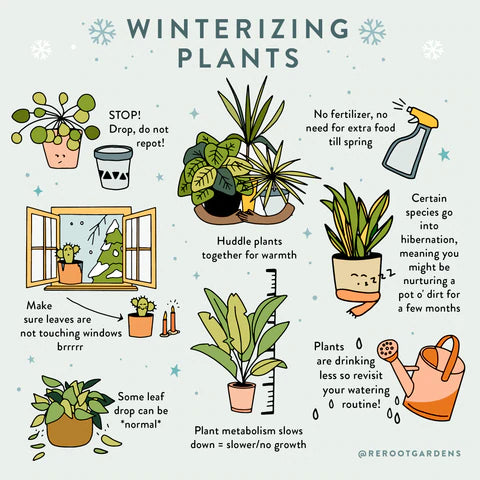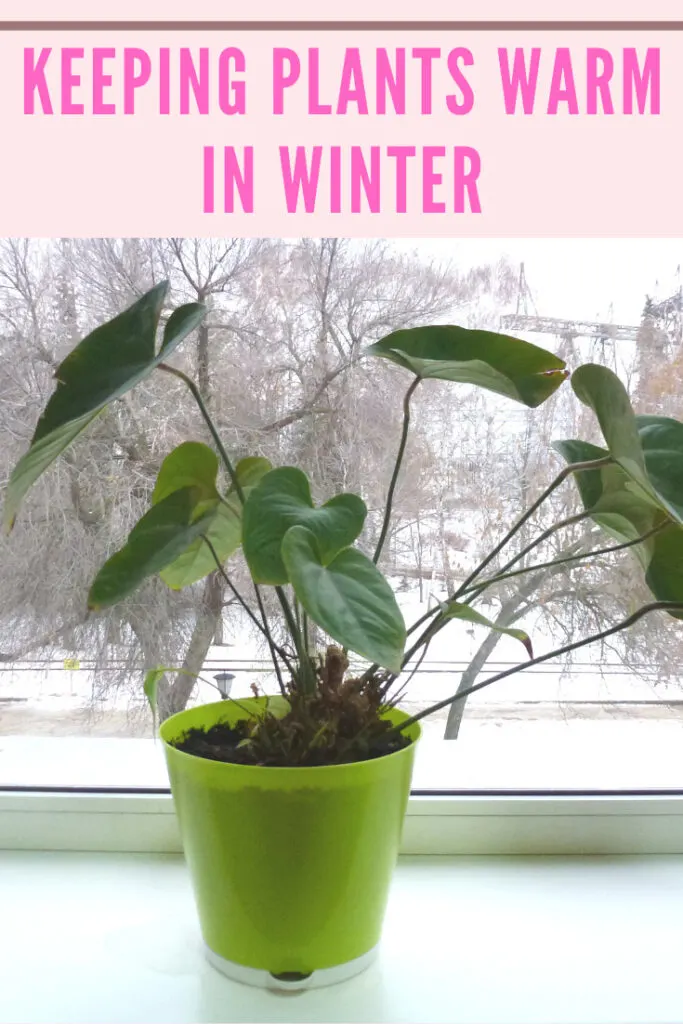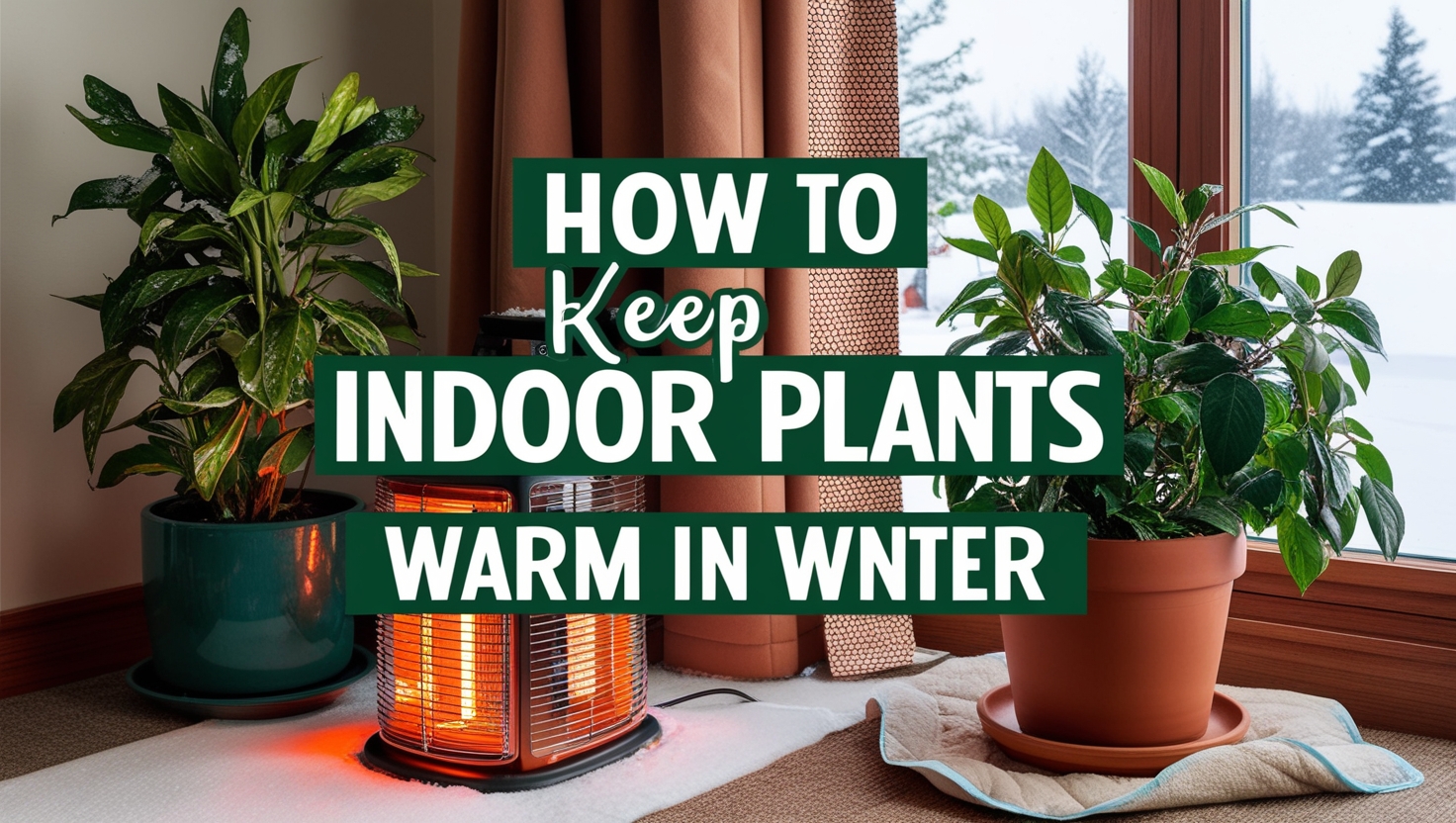To keep indoor plants warm in winter, move them away from drafty windows and use insulating materials. Ensure they receive adequate sunlight and maintain consistent room temperature.
Indoor plants need extra care during winter to thrive. Cold drafts and fluctuating temperatures can stress them. Positioning your plants away from doors and windows reduces exposure to cold air. Using materials like bubble wrap or insulating curtains around pots helps retain warmth.
Providing adequate sunlight is crucial; consider using grow lights if natural light is insufficient. Consistent room temperature is also important, so avoid placing plants near heating vents or radiators. Regularly check soil moisture levels, as indoor heating can dry out the air and soil. Following these steps ensures your indoor plants stay healthy and vibrant throughout the winter season.
Introduction To Indoor Plant Care In Winter
Winter can be tough on indoor plants. They need extra care to survive. Knowing how to keep them warm is crucial. This guide will help you protect your plants during the cold season.
Why Temperature Matters
Plants need the right temperature to grow. Cold temperatures can cause stress. This can lead to poor growth and even death.
| Temperature (°F) | Effect on Plants |
|---|---|
| Above 60 | Healthy growth |
| 45-60 | Slow growth |
| Below 45 | Stress and damage |
Common Challenges During The Cold Season
- Drafts: Cold air from windows and doors can harm plants.
- Low Humidity: Winter air is dry. Plants need moisture to thrive.
- Less Light: Shorter days mean less sunlight for plants.
- Cold Floors: Floors can be very cold. This affects potted plants.
- Move plants away from windows.
- Use a humidifier to add moisture.
- Provide extra light with grow lights.
- Raise plants off cold floors.

Credit: www.rerootgardens.com
Identifying Your Plants’ Temperature Needs
Understanding your plants’ temperature needs is crucial during winter. Different plants have varied temperature preferences. Knowing these helps keep your plants healthy and happy.
Tropical Vs. Temperate Plants
Tropical plants need warm temperatures. They thrive in temperatures between 65-75°F (18-24°C). Examples include orchids, ferns, and palms.
Temperate plants prefer cooler conditions. They do well in temperatures between 55-65°F (13-18°C). Examples include succulents, cacti, and some herbs.
| Plant Type | Ideal Temperature Range (°F) | Examples |
|---|---|---|
| Tropical | 65-75°F | Orchids, Ferns, Palms |
| Temperate | 55-65°F | Succulents, Cacti, Herbs |
Signs Of Cold Stress In Plants
Cold stress in plants can be harmful. Look for these signs:
- Wilting leaves
- Yellowing or browning edges
- Drooping stems
- Stunted growth
Address these signs quickly. Adjust the temperature to keep your plants safe.
Strategic Placement Of Plants
Winter can be a challenging time for indoor plants. One key strategy to help them thrive is strategic placement. Placing your plants in the right spots in your home can make a significant difference. It helps in keeping them warm and healthy during the colder months.
Avoiding Cold Drafts
Cold drafts can harm your plants. Ensure to keep them away from windows and doors that are frequently opened. These areas can let in cold air, which can be detrimental to plant health.
- Move plants away from doorways.
- Keep plants away from leaky windows.
- Use draft stoppers to block cold air.
Maximizing Natural Light Exposure
During winter, natural light is limited. Place your plants where they can get the most sunlight. South-facing windows are ideal as they get the most light.
- Position plants near south-facing windows.
- Rotate plants to ensure even light distribution.
- Clean windows to maximize light entry.
Strategic placement of your indoor plants is crucial in winter. Avoid cold drafts and maximize natural light exposure to keep your plants warm and thriving. These simple steps can make a big difference in your plant’s health.
Insulating Your Green Friends
Winter can be harsh for indoor plants. Keeping them warm ensures their survival and growth. Let’s explore ways to insulate your green friends.
Using Plant Tents
Plant tents are great for indoor plants. They create a warm micro-environment. You can buy them or make your own. Use clear plastic to cover the plant. Ensure there’s enough air circulation. Place a small heater or grow light inside the tent. This keeps the temperature steady.
Applying Mulch For Root Protection
Mulch is not just for outdoor gardens. It helps indoor plants too. Cover the soil with organic mulch. This keeps the roots warm. You can use straw, wood chips, or even shredded paper. Mulch also retains soil moisture. It reduces the need for frequent watering.
| Material | Benefits |
|---|---|
| Straw | Excellent insulation, easily available |
| Wood Chips | Long-lasting, good moisture retention |
| Shredded Paper | Cheap, easy to use |
For best results, apply a 2-3 inch layer of mulch. Keep the mulch away from the plant stem. This prevents rot and pest issues.
- Use plant tents for a warm micro-environment.
- Apply mulch to keep roots warm.
- Ensure proper air circulation.
- Use organic materials like straw or wood chips.
Artificial Heating Solutions
Keeping indoor plants warm during winter can be challenging. Artificial heating solutions offer effective ways to maintain a comfortable environment for your green friends. Let’s explore some methods to achieve this.
Heat Lamps And Mats
Heat lamps and mats can provide consistent warmth for your plants. They are particularly useful for tropical plants that need extra heat. Here are some tips:
- Position heat lamps above the plants. Ensure they are not too close.
- Use heat mats under the pots. This warms the roots directly.
- Monitor the temperature. Keep it within the ideal range for your plant species.
Consider using a combination of both heat lamps and mats. This ensures even heat distribution. A timer can help regulate the heat, preventing overheating.
Adjusting Home Heating
Adjusting your home heating can also benefit your plants. Here are some strategies:
| Heating Method | Benefits |
|---|---|
| Central Heating | Provides even warmth throughout the house. |
| Space Heaters | Target specific areas where plants are located. |
| Radiant Floor Heating | Warms the roots from below, ideal for potted plants. |
Place plants in warm spots, away from cold drafts. Keep them near sunny windows. Ensure they are not too close to radiators to avoid overheating.

Credit: twothirstygardeners.co.uk
Humidity Control During Winter
Keeping indoor plants warm during winter is crucial for their health. One of the key factors is humidity control. Winter air can be very dry, which can harm your plants. By maintaining proper humidity levels, you can ensure your plants thrive.
Humidifier Use
Using a humidifier is an effective way to maintain humidity. Place a humidifier near your plants to create a moist environment. This helps to mimic their natural habitat.
Here are some tips for using a humidifier:
- Choose a cool-mist humidifier to avoid overheating your plants.
- Set the humidifier to run for a few hours each day.
- Place the humidifier at a safe distance to prevent direct water exposure.
Diy Humidity Trays
If you don’t have a humidifier, you can make DIY humidity trays. These trays are easy to create and effective.
Follow these simple steps to make a humidity tray:
- Find a shallow tray or dish.
- Fill the tray with small pebbles.
- Add water to the tray, just below the top of the pebbles.
- Place your plant pot on top of the pebbles.
As the water evaporates, it will increase humidity around the plant.
Here are some benefits of using humidity trays:
| Benefit | Description |
|---|---|
| Cost-effective | Uses simple, inexpensive materials. |
| Easy to make | Requires minimal effort and time. |
| Natural solution | Mimics natural humidity. |
Maintaining humidity during winter is vital for indoor plants. By using a humidifier or creating DIY humidity trays, you can keep your plants warm and healthy.
Watering Practices For Colder Months
Keeping indoor plants warm in winter is crucial. Watering practices change in colder months. Adjusting your watering routine helps plants thrive. Below are some tips to follow.
Reducing Water Intake
In winter, plants need less water. The soil takes longer to dry out. Overwatering can harm roots. Use a moisture meter to check soil. Water only when the top inch is dry.
Best Time Of Day For Watering
The best time to water plants in winter is the morning. Morning watering helps plants absorb water. It also prevents freezing at night. Avoid watering in the evening. Evening watering can cause root rot.

Credit: www.ohiotropics.com
Monitoring And Adjusting Plant Care
Keeping indoor plants warm in winter requires careful attention. Monitoring and adjusting plant care is crucial for their survival. This section will guide you through essential practices to ensure your plants stay healthy and cozy.
Regular Temperature Checks
Maintaining the right temperature is vital for indoor plants. Use a thermometer to monitor the room temperature. Ensure it stays within the ideal range of 65-75°F (18-24°C).
Place thermometers near plants, away from heaters or drafts. Regularly check the temperature throughout the day. Plants can be sensitive to sudden temperature changes.
Consider using a heating pad under pots if necessary. Always follow the manufacturer’s instructions. This can help maintain a consistent temperature for the roots.
Adapting To Plant Responses
Observe your plants for signs of stress. Wilting, yellowing leaves, or slow growth can indicate cold stress. Adjust their care based on these responses.
If a plant appears stressed, move it to a warmer location. Ensure it receives adequate light, but avoid direct heat sources.
Watering needs may change in winter. Check the soil moisture regularly. Use a moisture meter for accuracy. Overwatering can harm plants, especially in colder months.
Consider grouping plants together. This can create a microclimate, helping to keep them warm. Ensure there is enough space for air circulation.
Use a humidifier to maintain optimal humidity levels. Many indoor plants thrive in higher humidity. Regular misting can also help.
Expert Tips For Winter Plant Care
Winter can be tough for indoor plants. They need extra care to stay warm. In this section, we provide expert tips for winter plant care. These tips will help you keep your plants healthy during the cold months.
Consulting With Botanists
Consulting with botanists can provide valuable insights. Botanists are experts in plant care. They understand how cold affects plants. You can schedule an appointment with a local botanist. They can offer advice tailored to your specific plants.
Here are some questions to ask:
- Which plants are most sensitive to cold?
- What temperature is ideal for my plants?
- How often should I water my plants in winter?
Utilizing Plant Apps And Forums
Technology can be a great ally in plant care. Plant apps and forums offer a wealth of information. They can provide tips and reminders for winter care. Most apps allow you to set specific care schedules. This helps you stay on track with watering and feeding.
Here are some popular plant apps:
| App Name | Features |
|---|---|
| PlantSnap | Identifies plants and gives care tips |
| Greg | Custom watering schedules |
| Planta | Care reminders and plant health tips |
Online forums are another excellent resource. You can ask questions and share experiences with other plant lovers. Some popular forums include:
- Reddit’s Houseplants subreddit
- GardenWeb
- Houzz Garden Forum
Joining these communities can provide support and new ideas for winter plant care.
Frequently Asked Questions
How To Keep An Indoor Plant Warm In The Winter?
Place indoor plants near sunlight. Use a space heater or heating mat. Insulate pots with bubble wrap. Keep away from drafts. Water sparingly.
What Temperature Is Too Cold For Indoor Plants?
Indoor plants generally suffer below 50°F (10°C). Ensure temperatures stay above this to keep your plants healthy.
How Do You Save A Houseplant That Got Too Cold?
Move the plant to a warmer spot immediately. Trim damaged leaves and stems. Water sparingly to avoid root rot. Increase humidity with a humidifier or misting. Monitor for recovery signs.
What Keeps Plants Warm In Winter?
Plants stay warm in winter through mulch, frost cloths, and windbreaks. Mulch insulates roots, frost cloths trap heat, and windbreaks block cold winds.
Conclusion
Keeping indoor plants warm in winter is essential for their health. Use proper insulation and avoid cold drafts. Invest in grow lights to maintain warmth and provide necessary light. Regularly check soil moisture to prevent root damage. With these tips, your indoor plants will thrive during the colder months.

My mission is to help you bring the beauty of nature indoors with expert advice, detailed plant care guides, and creative design ideas.




